Let us consider an open loop system, which has some value of bandwidth. Now, when the loop is closed via negative feedback, the gain of the system reduces and the bandwidth of the system increases. Increased bandwidth implies quick response time. The question is that: How does the same actuator begin to work faster when the system is operating as a closed loop system as compared to when it is working in open loop
-
It doesn't. However, as NFB has reduced the gain, the output doesn't have so far to travel, so it gets there sooner. The system BW only increases to the same extent (at best) as the gain has been reduced. – Jul 31 '21 at 13:00
2 Answers
The actuator cannot become faster if it's not driven harder. The calculated bandwidth widening happens only if there's no overdrive in any part of the system. A simple example: Have an opamp with GBW = 1MHz. You may use it with voltage gain =10 and the bandwidth is only 100kHz, as a voltage follower the BW would be 1MHz.
In both cases a step input gives the same maximum output voltage change rate (=volts per second) which is specified as "slew rate" . The slew rate is limited by max currents which charge and discharge internal capacitances.
The speed is not higher at G=1 than at G=10. If your input is say 1Vpp sinusoidal, not a step, the G=1 version works without remarkable distortion in 10x higher frequencies than the G=10 version because G=1 version tries less. If you compare the versions with the same output, say 1Vpp both versions work as well at the same frequency.
-
But the settling time is lower. Lets assume a system having transfer function G1(s) = 1/(s+10). In unity feedback closed loop, transfer function will be G2(s) =1/(s+11). If we compare the settling time, G2(s) has lower settling time than G1(s), so the response time has decreased in closed loop. So, to deliver faster response, more power will be needed by actuator? Isnt it? Please point out mistake in my reasoning, I am confused – SaJ Jul 31 '21 at 11:47
This is how you need to think of the problem. You need to consider open-loop gain then closed-loop bandwidth. Consider the open-loop gain of a typical op-amp (blue graph below is voltage gain): -
So, it has a bandwidth at unity gain of 10 MHz and that's as fast as it can get unless you want a gain of -20 dB then, it has a bandwidth of 100 MHz. If you want a closed-loop gain of 100 (40 dB) then you'll get a bandwidth of 100 kHz.
Taking it to extremes, if you want a closed loop gain of 1,000,000 you will only have a bandwidth of 10 Hz.
How does the same actuator begin to work faster when the system is operating as a closed loop system as compared to when it is working in open loop
It doesn't because you have traded a flatter reduced gain for a wider bandwidth but, that doesn't mean something will become faster; both gain and bandwidth loosely contribute to an ill-defined term such as "faster".
- 434,556
- 28
- 351
- 777
-
I mean, when the system is in closed loop, the bandwidth increases. Increased bandwidth implies quicker response times. For delivering a quick response, the actuator has to work faster. Is there any mistake in my reasoning here? If not, then How does the same actuator begin to supply more power or work faster, when the system operates as closed loop in comparison to when it is working as open loop? – SaJ Jul 31 '21 at 09:06
-
1Gain also implies quicker response time and, if you look at the blue slope in the graph in my answer, the gain*bandwidth is constant. Saying the bandwidth increases is really only saying that the bandwidth is flatter for a larger part of the spectrum. Think about it. – Andy aka Jul 31 '21 at 09:09
-
Lets assume a system having transfer function G1(s) = 1/(s+10). In unity feedback closed loop, transfer function will be G2(s) =1/(s+11). If we compare the settling time, G2(s) has lower settling time than G1(s), so the response time has decreased in closed loop. So, to deliver faster response, more power will be needed by actuator? Isnt it? Please point out mistake in my reasoning, I am confused – SaJ Jul 31 '21 at 11:48
-
@SaJ you are not comparing apples with apples. 1/(s+10) does not have the same low pass break-point as 1/(s+11) and it doesn't have the same gain at DC. – Andy aka Aug 04 '21 at 12:39
